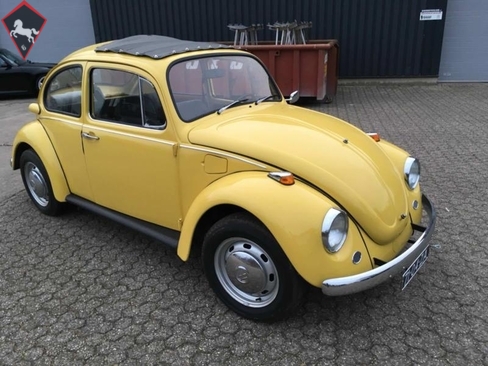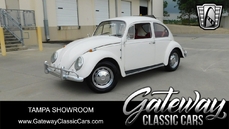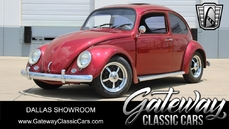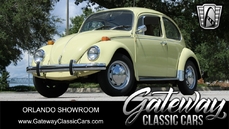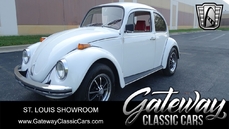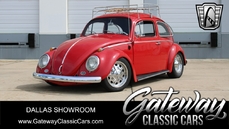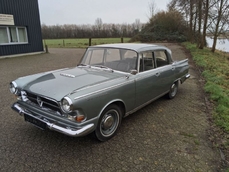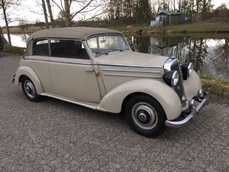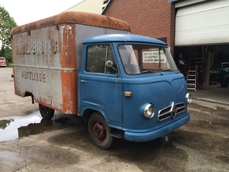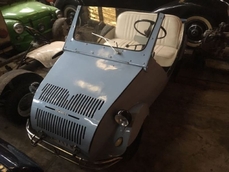Volkswagen Beetle Typ1 Seabug amphicar 1973
General description :
Informationen auf Deutsch
Weitere Informationen
Türenzahl: 3
Zylinderzahl: 4Informatie in het Nederlands
Opmerkingen
Deze kever is zeer special, omdat hij namelijk kan varen. Voor beelden hiervan kunt u hier klikken.
https://youtu.be/THngcfdqLTE
https://youtu.be/blY6b0ziT6k
De Volkswagen Kever, die werd gebouwd van 1938 tot 2003, is de bekendste Volkswagen, de bekendste Duitse auto, en in het algemeen een van de bekendste auto's ooit. Tot 1967 werd hij Typ 1, 1200, 1300 genoemd (naar de motorinhoud in cc), maar in de volksmond werd hij, vanwege de vorm, kever genoemd, waarna de fabrikant die naam zelf ook ging gebruiken. Van de Volkswagen Kever zijn er meer dan 20 miljoen wagens geproduceerd van 1937 tot 2003 en is daarmee de langst en de meeste geproduceerde wagen op eenzelfde platform.
Dieser Käfer ist sehr speziell, weil er segeln kann. Für Bilder davon können Sie hier klicken.
https://youtu.be/THngcfdqLTE
https://youtu.be/blY6b0ziT6k
Der Volkswagen Beetle, der von 1938 bis 2003 gebaut wurde, ist der bekannteste Volkswagen, das berühmteste deutsche Auto, und in der Regel eines der bekanntesten Autos aller Zeiten. Bis 1967 wurde er Typ 1, 1200, 1300 (nach dem Hubraum in cc), aber im Volksmund er wurde wegen der Form, Käfer genannt, nach dem der Hersteller diesen Namen selbst verwenden würde. Vom Volkswagen Käfer wurden von 1937 bis 2003 mehr als 20 Millionen Autos produziert, womit er zum längsten und am meisten produzierten Auto auf der gleichen Plattform wurde.
-
This beetle is very special, because he can sail. For video's of this you can click here.
https://youtu.be/THngcfdqLTE
https://youtu.be/blY6b0ziT6k
The Volkswagen Beetle, which was built from 1938 to 2003, is the best-known Volkswagen, the most famous German car, and in general one of the most famous cars ever. Until 1967 he was called Type 1, 1200, 1300 (after the engine capacity in cc), but in the vernacular he was called, because of the shape, beetle, after which the manufacturer would use that name himself. Of the Volkswagen Beetle, more than 20 million cars were produced from 1937 to 2003, making it the longest and most produced car on the same platform.
Meer informatie
Aantal deuren: 3
Aantal cilinders: 4
BTW/marge: BTW niet verrekenbaar (margeregeling)
Bedrijfsinformatie
Zaterdags geopend van 09-13 uur, de rest van de week op afspraak.
Samstag 9-13 uhr geöffent rest der woche auf termin. Wir können auf Wunsch für Ihr Fahrzeuge den TÜV absolvieren, und ein H.gutachten erstellen.Wir sind 7km von die Deutsche grenze. Besichtigung nur nach Terminvereinbarung!
We are open on Saturday 9-13 hour, rest of the week on appointment. We can arrange German, or other papers for the car. We are located 7 km from the German border. Car can be seen_at appointment. We can also arrange transport for the car around the world....
1973 Volkswagen Beetle Typ1 Seabug amphicar is listed for sale on ClassicDigest in Ettensestraat 19NL-7061 AA Terborg by POTOMAC CLASSICS B.V. for €21500.
Car Facts
Car type : Car Make : Volkswagen Model : Beetle Typ1 Model Version : Seabug amphicar Engine size : 1.2 Model Year : 1973 Sub type : Van Location : Ettensestraat 19NL-7061 AA Terborg Vehicle Registration : Undefined
21500 €
People who viewed this Volkswagen Beetle Typ1 also viewed similar Volkswagen listed at ClassicDigest
Other cars listed for sale by this dealer
About Volkswagen
The Volkswagen story is indeed an intriguing tale of innovation, resilience, and post-war revival, marked by various models that have become iconic in automotive history.The People's Car (Volkswagen): Initially envisioned by Adolf Hitler in the 1930s as a "people's car" or "Volkswagen" in German, the idea was to create an affordable and practical vehicle for the German people. This concept led to the development of the Volkswagen Beetle (or the Type 1), designed by Ferdinand Porsche.
Post-War Challenges: After World War II, Volkswagen faced significant challenges. The factory was heavily damaged, and the brand's association with the Nazi regime led to a lack of interest in the car in some regions.
British Intervention - The British Army & Ivan Hirst: The British Army took control of the factory in the immediate post-war period. Major Ivan Hirst, a British Army officer, played a crucial role in reviving Volkswagen. He recognized the potential of the Beetle and advocated for its production, convincing the British military to order several thousand cars. This decision helped jumpstart the brand's revival.
Export Success and the Beetle's Global Appeal: The Beetle gained popularity not only in Germany but also globally, becoming an icon of affordable motoring. Its simple, reliable design and unique appearance made it a favorite among consumers worldwide.
Model Evolution: Over the years, Volkswagen introduced various models alongside the Beetle, each contributing to the brand's growth:
Type 2 (VW Bus or Transporter): Introduced in the 1950s, it became an iconic symbol of the hippie movement in the 1960s, loved for its spaciousness and versatility.
Golf (Rabbit in the U.S.): Launched in the mid-1970s, the Golf (or Rabbit in the U.S.) marked a shift towards front-wheel-drive, modern design, and hatchback practicality, becoming a cornerstone of the brand's success.
Passat, Jetta, and Other Models: Volkswagen expanded its lineup with models like the Passat and Jetta, catering to different market segments.
Challenges and Innovations: Despite success, Volkswagen faced challenges, including quality issues in the 1970s. However, the brand continued to innovate and develop new models and technologies.
Rise of the GTI and Global Expansion: The 1980s saw the rise of the iconic Golf GTI, a high-performance version that sparked the hot hatch trend. Volkswagen also expanded its global presence during this period.
The British intervention in reviving Volkswagen after World War II played a pivotal role in the brand's resurgence. While there might have been some tensions or competition among automotive companies in the 1950s and 1960s due to Volkswagen's post-war success, the brand's ability to produce innovative and popular models solidified its place in automotive history.
